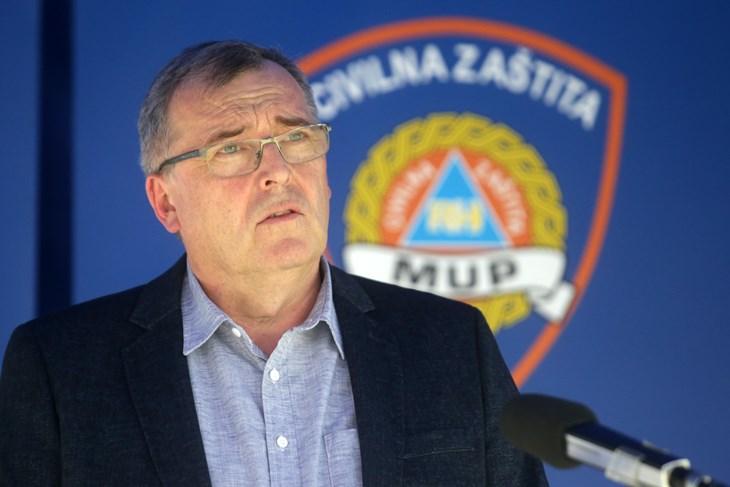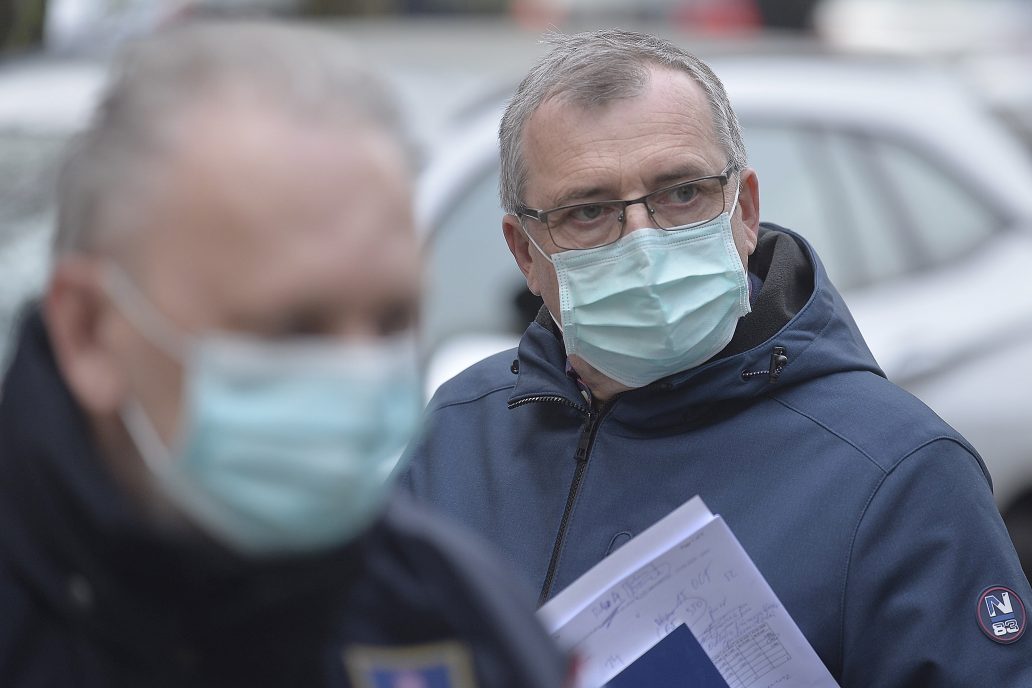Efficient measures in fight against COVID 19 are basic and always the same: enhanced personal hygiene and hygiene of the premises, space between people, wearing masks, ventilation of rooms.

Depending on the epidemiological situation in a particular environment, it is possible that we return to higher levels of closure, through all already known measures we had until the reactivation in May, but with limited duration in regards to time and location, stated the Director of the Croatian Institute of Public Health Asst. Prof. Krunoslav Capak, MD, PhD, for Diplomacy & Commerce. He added that there are great challenges ahead of us regarding the beginning of the school year. Spreading of the virus to homes for the elderly and infirm and hospitals – the biggest concern

-
Croatian Institute of Public Health (CIPH) is the leading public health institution in the country and in the region. To what extent have the new circumstances caused by COVID 19 affected the reorganization of the Institute’s work and is there some new structure? How much is this a “special” situation in CIPH’s operations of?
This is definitely a new situation in CIPH’s operations. Even though we did have some different epidemiological or ecological threats in the past, like the outbreak of measles or floods, this pandemic cannot compare to anything else in terms of its intensity, influence on lives and health of people, and its duration. Workloads and demands made to CIPH have been extremely high for months. The biggest requirements are placed before the Department of Epidemiology, Department for Health Ecology and the Department of Microbiology, but all other Departments also jump in, each in their own field of work, but also to assist these activities.
-
The COVID 19 pandemic is still in progress, and it seems that the epidemic isn’t staying still either. What new/old measures could we count on in the event of increase in the number of infected and how far in advance is it possible to anticipate measures given that the situation is changing from one day to another?
In addition to general measures that should be applied always and everywhere, specifically in relation to infected persons, it is necessary to carry out early detection by performing tests, through isolation of such a person and determining contacts (persons who could be infected by this infected person) and introducing health surveillance in self-isolation for contacts. Many human activities are the opposite of these basic measures at their core because they are based on closer social contact (sharing a room in a resort, staying in the same classroom, public transport lasting more than 15 minutes) or on communication/activities that do not allow wearing a mask (e.g. consumption of food and drinks is not possible with a mask, teaching children correct pronunciation either in education or in speech therapy, etc.). In relation to certain activities, social interactions and spheres of life, the only question is how these basic measures will be applied and whether the realization of a certain activity can be encouraged with maintenance of an appropriate level of security. At the same time, a lower level of security is necessary in an environment with fewer patients and without free circulation of the virus, while in environments with more patients and free circulation of the virus in the population, a higher level of security or more restrictions are necessary.
-
To what extent do tourist facilities adhere to the prescribed measures? How much are they respected closed areas and will the Directorate impose some sanctions on those who do not respect them?
I believe that the managements of such facilities are responsible in their behaviour because they can cause a lot of problems and negative publicity for their facilities and their business in case of a disease, and especially in case of disease spread. This is a time when one should not resort to short-term thinking. Everything that happens very easily ends up in public not only in our country but also in foreign countries. All the negative experiences will eventually add up as well as all the positive experiences, and we hope they will remember us as reliable and responsible hosts after this tourist season. Generally speaking, we in the public health system believe more in education and encouragement, as well as in partnership with citizens – because our common future depends on this, than in sanctions. Although, the Law on Protection of the Population from Infectious Diseases provides sanctions in such and other situations.
-
What was the hardest thing for you personally in the midst of the epidemic and what were you most afraid of? What was the “weakest” link in the protection chain?
During this entire epidemic, I am most concerned about the possible spreading of the virus into the homes for the elderly and infirm as well as in hospitals. These moments happened in a way that they got out of control in the countries most affected by the pandemic. Italy is closest to us. In such situations, there are moments that are civilizationally unacceptable, ethically deeply questionable and violate the moral integrity of the individual and society: to choose whom to provide adequate health care due to insufficient health care workers and necessary equipment such as respirators, whom to provide proper meals and care when there are not enough employees to provide it to everyone because they are infected or in self-isolation, etc. The quality of life we have achieved in Croatia, the tradition of the welfare state especially in terms of affordable health care and social care for the most vulnerable, has developed us into a society that does not accept and fundamentally condemns such choices.
For now, we can proudly conclude that everything unfavourable that happened in our hospitals and homes for the elderly and infirm, and even in the home in Vukovarska in Split, is actually rather minor in relation to the insidiousness of this infection and in relation to the number of people accommodated and employees in such institutions throughout Croatia. The evacuation of the residents of the home in Vukovarska to KBC is actually an example of a well-coordinated action of the health and social sector, with the help of the Civil Protection Directorate and other services. We need to be aware that such action would not be possible in many of the countries we like to emulate.

-
What are the predictions for the fall? And how difficult will it be to curb the growth in the number of infected without the strict measures we have had, and how difficult will it be when flu patients, COVID 19 patients, etc. start to mix?
Autumn and winter are more suitable for the spread of all respiratory infections than summer. People are more indoors, it’s harder to ventilate the space, there’s not as much sunlight. That is why we are especially preparing for the fall. The CIPH particular deals with the procurement of influenza and pneumococci vaccines in order to protect the most at-risk population. There are also big challenges ahead of us regarding the start of the school year. Admission of children in kindergartens and schools is not only necessary for the welfare of children but also for enabling parents to work. Fortunately, the opening of kindergartens and schools since May 2020 has shown that measures to prevent the spread of the infection can work. Although we have had individual positive cases in children or kindergarten or school staff, so far we have not seen the spread of infection in terms of epidemic spread within kindergarten or school, and the issue of contact is mostly limited to a single educational group rather than the entire institution.
-
Even with this crisis, CIPH continues with its plans and operations. What are your priorities and plans in the upcoming period?
Our buildings, especially one location, were damaged in the earthquake. Even before the earthquake, we had a lack of space for work and the fact that the buildings are older and extremely demanding to maintain. That is why we are prioritizing the matter of space. In professional terms, CIPH is always on a seesaw between chronic non-communicable diseases that are responsible for most deaths and communicable diseases that often seem to no longer be a problem and which we know we must always be vigilant about. Until this pandemic, one could often hear opinions that infectious diseases were minimized by the development of hygiene, sanitation, and proper nutrition. Opponents of vaccination emphasize such views even to the point that vaccination is no longer necessary. Until the pandemic, we were often in a situation to explain why it was important to have an epidemiologist preparedness system, well-developed microbiological and ecological laboratories and human capacities. Now this no longer needs to be explained to anyone, but we must work intensively to ensure that chronic non-communicable diseases are not neglected in terms of prevention, early detection and timely treatment. Some risks will inevitably worsen due to the very nature of anti-epidemic measures: physical inactivity, improper diet, consequent obesity, increased risk to mental health due to stress, fear and social isolation, job loss and the like.
- A free vaccine against HPV and seven types of cancer for young people under 25 has recently become available. To what extent is the public informed about this, and to what extent, on the wave of information sharing regarding the COVID 19 virus, is it also possible to continue this for other activities of public health importance?
Free vaccination against HPV has been available throughout Croatia since 2015, first with a tetravalent vaccine and then with a nonavalent vaccine. Due to the fact that we have a 9-valent vaccine for both girls and boys, we are one of the few countries in the world with such a possibility. In the last two school years, there has been an increase in interest in the vaccine, which is regularly reported to us by school doctors throughout Croatia, who are the main vaccinators against HPV. Since May, HPV vaccination has also continued, so we hope to continue to increase the coverage. The expectation of a vaccine against COVID-19 is a message to all of us how much we should appreciate the vaccine we have at our disposal and because of which we have forgotten about some diseases as a society (polio, diphtheria). We still have not yet covered most young people with the HPV vaccination, so we cannot hope that as a society that we will be able to end “cervical cancer, what’s that, we don’t have that anymore” in the foreseeable future. But for every single young person who is vaccinated with this 9-valent vaccine, we can be sure that if a girl does not get cervical cancer, she not have to delay pregnancy due to changes in the PAPA test, she will not have potential problems in carrying the pregnancy to term because of conisation, etc. Also, all of our vaccinated young people will be much less likely to have genital warts and another 5-6 cancer sites.
-
How important is regional cooperation in the Institute’s work, and in that sense international as well? With which of the surrounding countries and in the EU do you cooperate the most and in what way?
Traditionally, we mainly cooperate with public health institutes from the region, especially with the Slovenian one, as evidenced by the recent meeting we held to coordinate measures and act together. However, it should be noted that public health institutes are constantly exchanging experiences, working together on strategic documents and plans, collecting and exchanging data, coordinating and coordinating actions, all via two platforms – the World Health Organization and the European Centre for Disease Prevention and Control (ECDC). This intensive international cooperation, exchange of good practice experiences, is at the core of public health development in all areas, related to chronic non-communicable diseases, communicable diseases, environmental and other issues important for the health and well-being of the population, and is not new in our daily work.